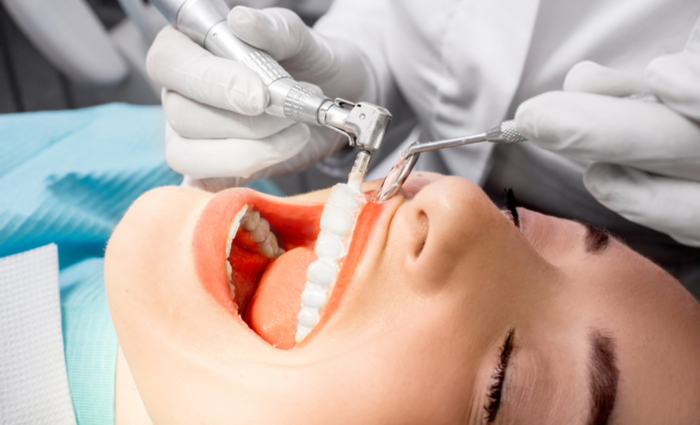
Introduction
When it comes to maintaining good oral hygiene, regular dental cleanings play a crucial role. Dental cleanings involve the removal of plaque and tartar buildup from your teeth, which helps prevent gum disease and tooth decay. Two common methods used for dental cleanings are ultrasonic scaling and manual scaling. In this article, we will explore the differences between these two techniques and determine which one is better for your teeth.
Understanding Ultrasonic Scaling
Ultrasonic scaling is a modern technique that utilizes high-frequency vibrations to remove plaque and tartar from your teeth. This method involves using an ultrasonic scaler, which consists of a vibrating metal tip and a water spray. The vibrations help break down the hardened deposits on your teeth, while the water spray cools the tip and washes away the debris.
The Benefits of Ultrasonic Scaling
1. Efficient Cleaning: Ultrasonic scaling is highly effective in removing plaque and tartar, even from hard-to-reach areas. The vibrations can dislodge stubborn deposits, ensuring a thorough cleaning.

2. Reduced Discomfort: The gentle vibrations of the ultrasonic scaler make the cleaning process more comfortable for patients, especially those with sensitive teeth or gums.
3. Faster Procedure: Due to its efficiency, ultrasonic scaling generally requires less time compared to manual scaling. This can be beneficial for individuals with busy schedules.
Potential Drawbacks of Ultrasonic Scaling
1. Noise and Sensation: Some patients may find the noise and vibrations of the ultrasonic scaler uncomfortable or unsettling.
2. Not Suitable for Everyone: Ultrasonic scaling may not be recommended for individuals with certain dental conditions, such as loose teeth, dental implants, or pacemakers. It is important to consult with your dentist to determine if this method is suitable for you.
Exploring Manual Scaling
Manual scaling, also known as hand scaling, is a traditional method of removing plaque and tartar using handheld dental instruments. These instruments, called scalers and curettes, have sharp tips that allow the dentist or dental hygienist to scrape off the deposits from your teeth.
Summary
Ultrasonic scaling and manual scaling are both effective methods for removing plaque and tartar from your teeth. Ultrasonic scaling uses high-frequency vibrations and water to break down and remove the buildup, while manual scaling involves using handheld instruments to scrape away the deposits. Each technique has its advantages and considerations.
Ultrasonic scaling is generally faster and more efficient, as the vibrations can reach areas that may be difficult to access manually. It is also less likely to cause discomfort or sensitivity, making it a preferred option for individuals with sensitive teeth or gums. However, it may not be suitable for those with certain dental conditions or implants.
On the other hand, manual scaling allows for more precise control and can be gentler on the teeth and gums. It is often recommended for individuals with extensive dental work or those who require a more delicate approach. However, it may take longer to complete the cleaning process compared to ultrasonic scaling.
Ultimately, the choice between ultrasonic and manual scaling depends on various factors, including your dental health, personal preferences, and the recommendation of your dentist or dental hygienist. They will assess your specific needs and determine the most suitable method to ensure a thorough and comfortable cleaning experience.
Remember, regular dental cleanings, regardless of the technique used, are crucial for maintaining optimal oral health and preventing dental issues. Consult with y go to website our dental professional to determine which scaling method is best for you and to schedule regular cleanings to keep your smile bright and healthy.
- Q: What is ultrasonic scaling?
- A: Ultrasonic scaling is a dental procedure that uses high-frequency vibrations to remove plaque, tartar, and stains from the teeth.
- Q: What is manual scaling?
- A: Manual scaling is a dental procedure that involves using handheld instruments, such as scalers and curettes, to scrape away plaque, tartar, and stains from the teeth.
- Q: Which is better for teeth, ultrasonic scaling or manual scaling?
- A: Both ultrasonic scaling and manual scaling are effective methods for cleaning teeth. The choice between the two depends on factors such as the patient’s oral health condition and personal preference.
- Q: Is ultrasonic scaling more comfortable than manual scaling?
- A: Many patients find ultrasonic scaling more comfortable than manual scaling because it involves less scraping and pressure on the teeth and gums.
- Q: Does ultrasonic scaling require less time than manual scaling?
- A: Yes, ultrasonic scaling is generally faster than manual scaling as the high-frequency vibrations can remove plaque and tartar more efficiently.
- Q: Can ultrasonic scaling cause any side effects?
- A: In some cases, ultrasonic scaling may cause tooth sensitivity or gum irritation. However, these side effects are usually temporary and resolve on their own.
- Q: Is manual scaling more cost-effective than ultrasonic scaling?
- A: Manual scaling is often more cost-effective than ultrasonic scaling as it does not require specialized equipment. However, the cost may vary depending on the dental clinic and the extent of the cleaning required.
- Q: Which scaling method should I choose?
- A: It is best to consult with your dentist to determine which scaling method is most suitable for your specific dental needs and preferences.

Welcome to my website! I’m Timothy Martens, a dedicated and experienced Periodontist specializing in dental braces, gum disease treatment, dental scaling, and toothpaste recommendations. With a passion for oral health and a commitment to providing exceptional care, I strive to help my patients achieve healthy and beautiful smiles.
